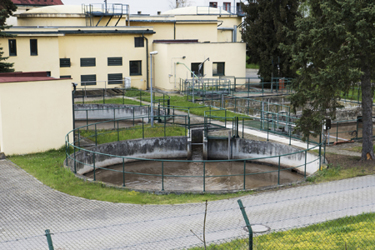Wastewater Collection And Treatment: General Observations
By Dr. J.H. Wakefield

In this discussion, I am going to discuss general issues in wastewater treatment and specifically the collection phase of waste treatment. We all realize the effort and expense that goes into treatment-plant technology, but many don’t seem to realize that the collection phase is where we get “more bang for the buck.”
The major issues in the collection phase of wastewater management can be delineated as follows:
- Fats, oil, and greases (FOG) are a major problem; this is particularly applicable to municipal wastestreams.
- Odors, particularly those related to sulfides (H2S), are a constant factor, as are other mercaptans and some indoles (skatole).
- In many waste streams, particularly in industrial ones, problems center on highly toxic anions/cations that require chemical treatment of one sort or another. Mining wastes may contain these as well as radioactive isotopes that one must deal with.
- Various regulatory entities proscribe effluent limitations on phosphates, nitrates, and various other organic entities.
Of the above, the first and second can be addressed oxidatively; the third and fourth may be addressed by means of sequestration and/or ion exchange (IX); and the second can be addressed by either of these methods.
An important factor to keep in mind is that phosphates and/or nitrates cannot be oxidized, as both are at their maximum oxidative states.
Microbial ecology plays an important role in most of these collection phase issues. Temperature of the wastestream and the surface configuration of suspended solids are also significant factors that should also be considered.
The above are general in nature, but they must be addressed and expanded upon in any presentation explaining a treatment technology.
Devices (digesters) are used to increase the dissolved oxygen (DO) content of input streams as well as to modify the input streams to facilitate the removal of offending and/or hazardous substances by reducing the size of the suspended particulates so that microorganisms can more efficiently metabolize them. These devices are modified “collision” aerators operating by means of a high-volume, low-pressure regenerative blower arranged in such a way as to maximize the delivery of oxygen to a fluid stream as well as the generation of a Venturi from the blower source.
These devices are designed for enclosed spaces such as wet wells and grease traps, or other contained fluid sources (for example, a treatment tank of some sort). The devices also serve as a fine mixer.
These technological devices can be modified to provide an oxidative enhancement environment by means of the introduction of an oxygen allotrope, ozone (O3), directly into the fluid stream. This results in an increased oxidative capacity for the device and provides a sterilant effect from the ozone. This ozone-generating capacity can be further modified to increase its oxidative capacity by utilizing the generation of free-radical hydroxyl ions (OH-) in conjunction with ozone generation to deliver what is known in the wastewater industry as AOP (advanced oxygen processing).
A further enhancement can be realized by the use of surface-active materials broadcast either pre- or post-input in the liquid by means of montmorillonite clays (bentonite) or by means of other ion-exchange/sequestration media (zeolites, specifically clinoptilolite). Actually, both of these materials are dual-purpose, although clinoptilolite is a much more effective ion-exchanger, particularly for divalent cations such as Pb++, Cu++, Cd++, Hg++ and other hazardous heavy metals. By surface-modifying clinoptilolite, it can be used to sequester anionic species such as oxyanions [arsenates and chromates (VI)] as well as significant regulatory anions such as phosphates and nitrates. An important point to take into consideration with these ion exchangers is to ensure the quality of their products as each deposit (mine) can vary widely.
Source: Environmental Aggregates, L.L.C., Saragosa, TX. Contact: Don Edwards, (452) 448-6177
